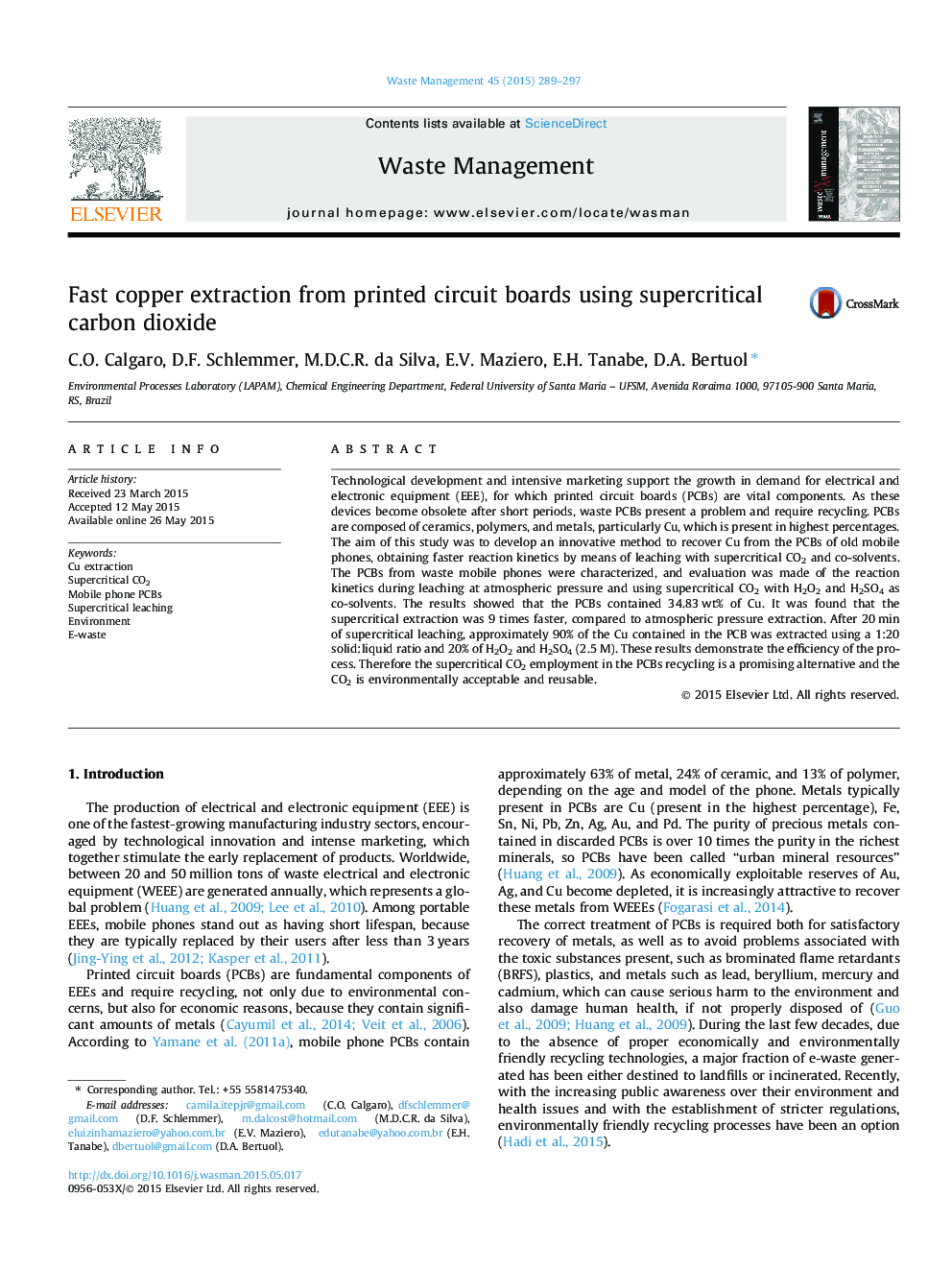| کد مقاله | کد نشریه | سال انتشار | مقاله انگلیسی | نسخه تمام متن |
|---|---|---|---|---|
| 6354334 | 1622640 | 2015 | 9 صفحه PDF | دانلود رایگان |
- Alternative technology to recycling PCBs.
- Supercritical CO2 with H2SO4 and H2O2 was efficient to Cu recovering from PCBs.
- Supercritical extraction was 9 times faster than an atmospheric extraction.
- Cu supercritical CO2 extraction without H2O2 did not was efficient.
- About 90% of Cu was recovered in 20Â min with supercritical CO2 modified.
Technological development and intensive marketing support the growth in demand for electrical and electronic equipment (EEE), for which printed circuit boards (PCBs) are vital components. As these devices become obsolete after short periods, waste PCBs present a problem and require recycling. PCBs are composed of ceramics, polymers, and metals, particularly Cu, which is present in highest percentages. The aim of this study was to develop an innovative method to recover Cu from the PCBs of old mobile phones, obtaining faster reaction kinetics by means of leaching with supercritical CO2 and co-solvents. The PCBs from waste mobile phones were characterized, and evaluation was made of the reaction kinetics during leaching at atmospheric pressure and using supercritical CO2 with H2O2 and H2SO4 as co-solvents. The results showed that the PCBs contained 34.83Â wt% of Cu. It was found that the supercritical extraction was 9 times faster, compared to atmospheric pressure extraction. After 20Â min of supercritical leaching, approximately 90% of the Cu contained in the PCB was extracted using a 1:20 solid:liquid ratio and 20% of H2O2 and H2SO4 (2.5Â M). These results demonstrate the efficiency of the process. Therefore the supercritical CO2 employment in the PCBs recycling is a promising alternative and the CO2 is environmentally acceptable and reusable.
Journal: Waste Management - Volume 45, November 2015, Pages 289-297
